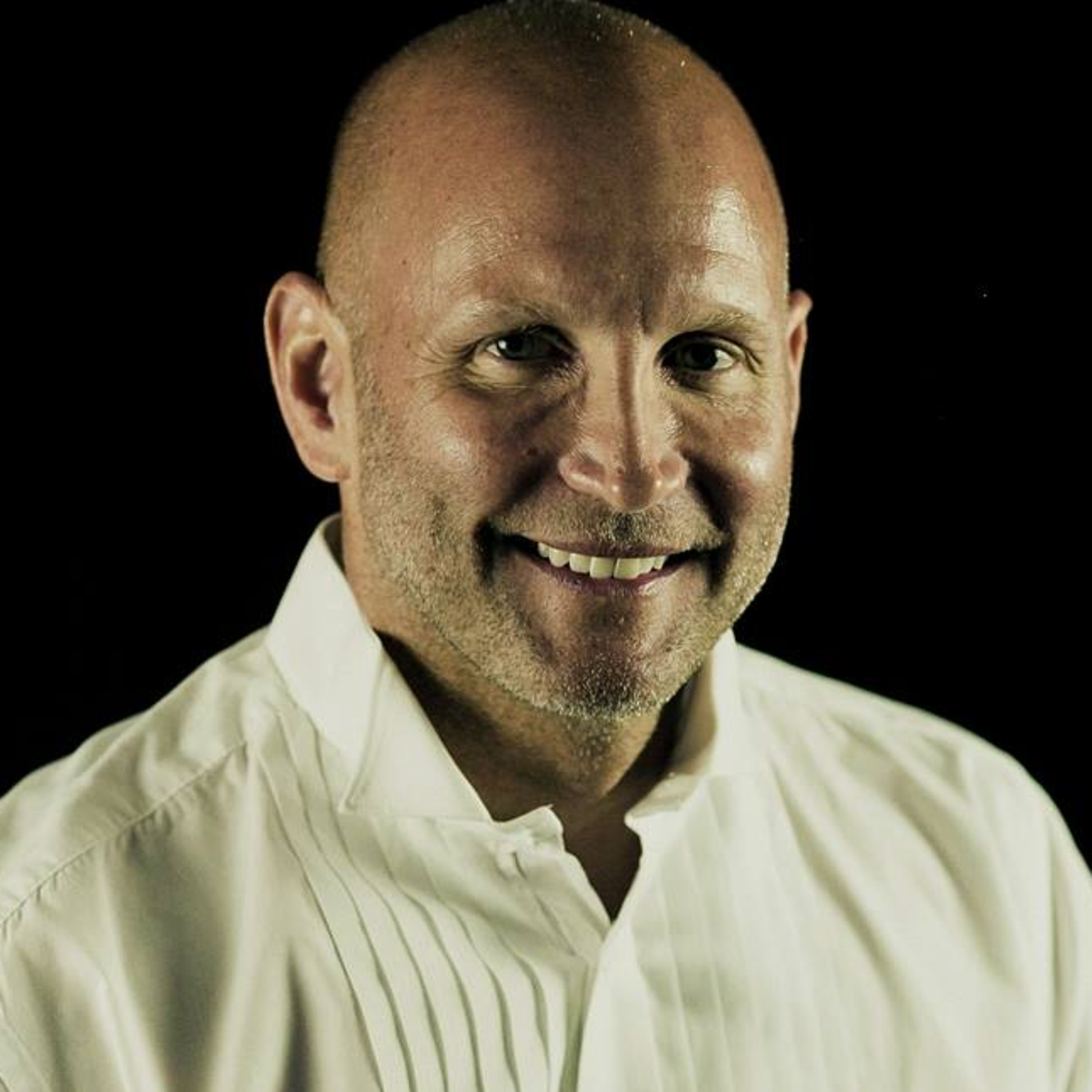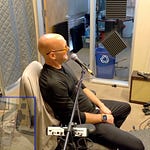When a man who hangs Christmas lights for a living begins thinking about recursion, natural pesticides, and the mathematics of existence, you know you’re in for an unexpected conversation. Austin Urie’s journey from rooftops in Rancho Santa Fe to waves in Hawaii became a reflection on purpose, creativity, and the boundaries between human craft, artificial intelligence, and nature itself.
A Seasonal Philosopher
Austin Urie spends four months a year on rooftops, wrapping the holidays in light. Then he disappears to Hawaii, trading ladders for surfboards and rooflines for reflection. His year is divided between intensity and introspection, between output and observation. The result is a kind of rhythm that feels both ancient and modern, a life designed around cycles rather than constants.
When we finally sat down, he laughed that he becomes “barbarian” during the off-season, unplugged and unresponsive, wandering through long stretches of thought. Beneath the humor, though, was a familiar crossroads. Should he stay with what works, or leap into the unknown?
That question sits at the heart of nearly every creative life. Whether you are an entrepreneur, musician, or scientist, there is always tension between what sustains you and what calls you forward. The Renaissance spirit lives in that tension—the place where doing and dreaming meet.
The Work of Hands and the Mind of Makers
I told Austin not to abandon the physical work. The coordination between the body and the brain is not something to “move past.” It is the origin of intelligence itself. The human hand, guided by attention and refined through repetition, is one of our greatest teachers. Dexterity trains cognition. The act of doing sharpens the act of thinking.
Those who work with their hands - electricians, builders, musicians, artists - maintain a connection to reality that is impossible to simulate. As AI automates the abstract, embodied work becomes a refuge for creativity. It is neurobiology in motion. Each grip, each adjustment, each act of balance keeps the sensory cortex alive and the mind anchored in the physical world.
Austin’s Christmas lights are not just decoration. They are discipline, design, and practice. He works fast and with precision, climbing onto rooftops that require focus and trust in one’s own balance. His hands are teaching him something every algorithm tries to forget: that creation requires friction.
The AI Wave and the Coming Undertow
Like many young builders, Austin feels the pull of AI. The tools are intoxicating - limitless possibility at low cost, infinite scalability, instant execution. But behind the euphoria lies a truth that history has already written. Every technological gold rush eventually collapses under its own expectations.
AI today is a bubble inflated by capital and myth. The promises are real, but the timeline is not. Investors are betting on acceleration, not evolution. They expect the world to reorganize overnight. Yet the systems that matter - education, medicine, governance, creativity—move on biological time. They adapt slowly.
That doesn’t mean stay out of the water. It means surf wisely. This is the moment to experiment while the current is still forming. Learn the tools, build the frameworks, and understand what can be done now. But keep one foot grounded in the physical world. The people who survive the correction will be those who can build with both code and calluses.
My Mini Software Company Made of AI
To illustrate, I told Austin how I run my own team of AI agents: a coder, a tester, and a manager. Each agent has defined roles, goals, and memory. I assign a project, and they collaborate - writing, debugging, and refining -while I step away. The system becomes a small company that never sleeps, producing results at a scale that once required ten employees.
But even here, the creative bottleneck remains human. AI executes beautifully, yet it still depends on direction. The hard part is not the code; it’s the clarity. Knowing what to ask, what to measure, and what to stop becomes the new creative art.
In this sense, AI has made language itself the new keyboard. The future belongs to people who can express their intentions precisely enough to be amplified.
Nature as the Original Engineer
Austin’s second act was less digital but no less inventive. On Oahu, he tried to build a natural pesticide to stop the coconut rhinoceros beetle, a destructive insect burrowing through palm trees. Chemical solutions exist, but they kill bees, coral, and soil along the way. Austin wondered if there was a gentler route.
His question was deceptively simple: could the problem be solved without destruction? What if, instead of exterminating the beetle, we changed its behavior - reduced its appetite, or interrupted its reproductive signals? A “skinny beetle” rather than a dead one.
That shift in perspective transforms pest control into ecology. Nature already manages these balances. Every forest, ocean, and cell contains mechanisms for restraint as well as survival. Instead of overpowering nature, perhaps our best path is to cooperate with it - to find what it has already learned through millennia of experimentation.
Repurposing as a Mindset
That same principle appears in science and business alike. In medicine, it’s called drug repurposing: using existing compounds for new purposes. Many of today’s blockbuster therapies were discovered by accident. Viagra began as a heart medication before it revealed a different talent.
Repurposing isn’t just a laboratory strategy. It’s a way of seeing. It asks us to look at what already exists and recognize hidden potential. Whether it’s molecules, software, or skill sets, progress often comes not from invention but from recombination.
In a world obsessed with disruption, repurposing reminds us that creation often begins with context. It is not about discarding the past but rearranging it until something new emerges.
Open Boundaries and the Mathematics of Connection
Our conversation turned abstract as Austin described his fascination with recursion, Gödel’s incompleteness theorem, and something he called “open boundaries.”
His insight was that reality is not made of separate things but of relationships. Existence, he said, is not a list of objects; it’s a web of interactions. Meaning arises in the space between.
He compared it to large language models. The intelligence of an LLM doesn’t live within the model itself. It lives in the dialogue between human and machine. Intelligence is emergent, relational, and alive only when shared.
The same is true in nature. Ecosystems, economies, and communities evolve not through isolation but through exchange. Nothing learns alone. The system becomes intelligent only when it listens.
Surfing, Systems, and the Fear Factor
When Austin isn’t hanging lights or experimenting in his kitchen, he’s in the ocean chasing waves. Surfing, for him, is the purest form of feedback. You read the water, respond to wind, adjust your balance, and surrender control just enough to stay upright.
He called it “grounding by fear.” The ocean humbles him into presence. Every wave reminds him that mastery is temporary and awareness is survival. It’s a form of meditation that requires motion.
Surfing teaches the same lesson as systems theory: stability comes from constant adaptation. Too much rigidity and you break. Too much looseness and you drift. The art is to stay dynamic, alert, and curious inside the chaos.
The Renaissance of Doing
The thread through all of this - from Christmas lights to beetles to code - is agency. Austin represents a growing generation of solopreneurs empowered by technology but grounded in craft. He works with his hands, thinks with his heart, and uses AI not as an escape but as an amplifier.
The Renaissance spirit is not about scale or fame. It’s about meaning. To live fully now requires both precision and play: the courage to experiment and the patience to refine.
That’s what the Renaissance Circle is about.
Work with your hands.
Think with your mind.
Listen to nature.
Collaborate with machines.
Stay curious enough to rebuild yourself each season.
This is not about survival in an age of disruption. It is about evolution through creation. The Renaissance is not behind us - it is beginning again, one open boundary at a time.
With all the talk of Beetles, a thought a few Beatles songs we went after with RickL, Jesse, TimD, Alan, and Randi might be fitting in several respects. These were micro-moonshots given this group hadn’t played together and the originals were highly produced and complex. But as they say, nothing ventured nothing gained.
And for fun - the end of Helter Skelter:











